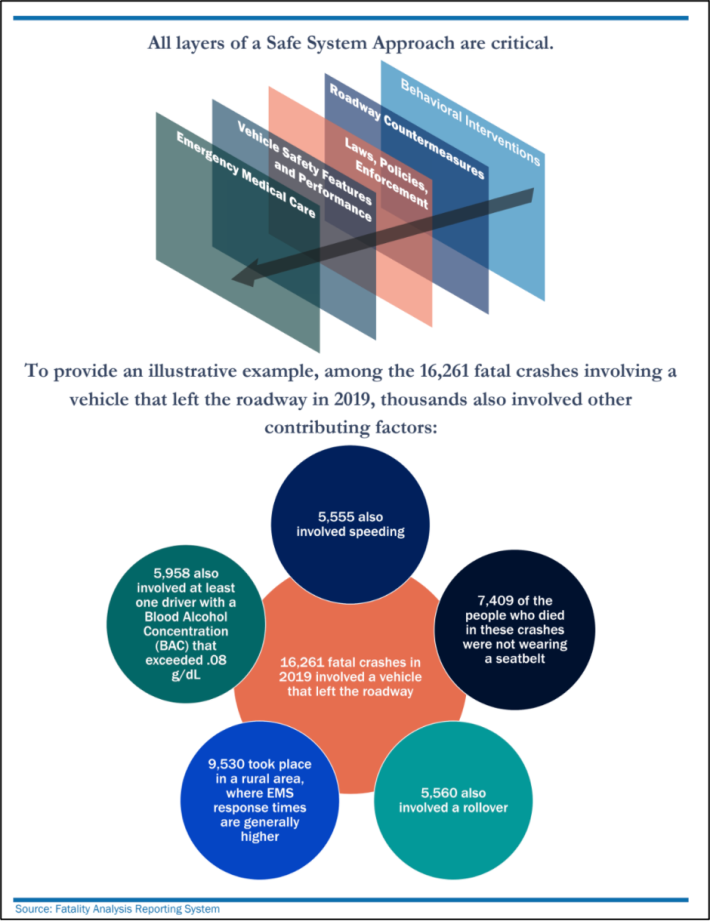A new set of federal crash reporting guidelines could actually encourage cities to collect less data about the systemic factors behind the national traffic violence epidemic by treating basic information about road design at crash sites as supplemental, a prominent national organization says.
Ahead of a recently extended May 3 deadline, the advocacy group Salud America is urging safe streets advocates to submit their comments on the newly revised sixth edition of the Model Minimum Uniform Crash Criteria, which outlines hundreds of recommended data points that communities across the U.S. should collect about car crashes. The guidelines aren't mandatory, but they're a common touchstone for law enforcement, and much of the data are aggregated into national databases, where they play a critical role in guiding national policy and development decisions.
Since it was first introduced in 1998, though, the document has faced criticism from safe streets advocates for recommending that departments collect granular details about individual crash factors, like whether pedestrians were wearing dark clothing, while simultaneously ignoring key data related to systemic factors about which policymakers might take action.
For instance, car crashes with pedestrians that don't result in a serious-enough injury generally don't meet the guidelines' recommended reporting threshold, leaving as many as one-third of such traumatic incidents unrecorded and making it harder to identify and address common crash sites. Basic details like the height and weight of a vehicle aren't requested either, even as evidence mounts that excessively tall and heavy car designs are a grown factor in the nation's crash death totals and as after-market modifications like lifted trucks grow increasingly common.
And even some fundamental information about common roadway characteristics — such as the distance to the closest crosswalk when a walker is struck outside of one — is omitted.
The new edition of the Model Minimum Uniform Crash Criteria would not only replicate all of those omissions, but actually remove all data related to roadways entirely — relegating it to a separate, supplementary document called Model Inventory of Roadway Elements. States have a mandate to adopt that document by September of 2026, but Salud America fears that in the meantime, it will be ignored.
"This is a problem because it shifts the priority of crash data collection off local law enforcement officers and onto states, expecting them to take additional, voluntary, steps beyond basic crash data reporting," the group wrote in a sample comment that its encouraging advocates to submit to regulators.
Data on when vehicles involved in crashes are modified after-market, especially stuff like lifted trucks that raise the hood to the level of the head and neck
— streetsblogkea (@streetsblogkea) April 5, 2023
To capture an accurate picture of why so many people die on America's transportation network, Salud America argues that the Model Minimum Uniform Crash Criteria should not only put roadway design back into the guidelines, but restructure the entire document around it and the other systemic factors that federal transportation officials themselves say are to blame for roadway crashes.
And they've already got a pretty good guideline. In the National Roadway Safety Strategy released in January 2022, U.S. DOT highlighted five systemic elements that need to come together to save lives — safer people, safer roads, safer vehicles, safer speeds, and better post-crash care — which could also guide data collection for police departments and non-police crash analysts nationwide.

For instance, a "safer speeds" section, as the group envisions it, could direct officers not just to note the speed limit on the road where a driver struck a pedestrian and whether that motorist exceeded it, but to note the speed at which the majority of drivers actually travel according to the most recent 85th percentile data, which might signal that the road design itself is encouraging dangerously fast driving and needs to be calmed.
A "safer people" section, meanwhile, could be retooled to emphasize not just how often road users commit an avoidable "human error" — a now-debunked statistic that came directly out of federal crash databases — but also simple but critical measurements like the height and weight of victims, which would make it easier to understand how vehicle design impacts injury and fatality rates on people in diverse bodies.
Of course, even the perfect Uniform Crash Criteria wouldn't make for perfect crash reporting. The guidelines, after all, are just guidelines, and even departments that wish to follow them to the letter don't always have the resources to do so, especially when it comes to the sometimes difficult process of analyzing roadway characteristics. Police departments, arguably, aren't well-equipped to do much of that analysis anyway, which is why some advocates argue that much of crash analysis should be done by roadway engineers, or even advocates willing to put in the time necessary to understand the root causes of preventable deaths and injuries.
If nothing else, though, better crash-reporting guidelines would encourage U.S. communities to dig deeper into the data behind traffic violence — and not settle for partial explanations of why so many people keep dying.
"Inconsistent and insufficient crash data has hindered efforts to identify risk factors and protective factors, which thwarts the development and adoption of strategies to prevent gruesome deaths and injuries," Salud America wrote. "We need an MMUCC that strengthens crash data."
This story has been updated with additional information about the MIRE supplement. USDOT declined to comment publicly.
You can submit your comments on the Model Minimum Uniform Crash Criteria until May 3, or using one of the two sample comments provided by Salud America.






